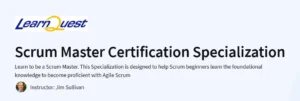What will you learn in this Interaction Design Specialization Course
Human-Centered Design: Understand the principles of designing technologies that bring joy rather than frustration.
Rapid Prototyping Techniques: Learn methods like paper prototyping and Wizard of Oz prototyping to quickly visualize and test design ideas.
User Research & Evaluation: Conduct fieldwork to gather user insights and evaluate interface alternatives effectively.
Visual Design Principles: Gain knowledge in typography, layout, color theory, and information architecture to create intuitive interfaces.
Social Computing: Explore the challenges and opportunities in creating online communities and collaborative experiences.
Interaction Techniques: Study human motor performance, perception, and cognition to inform effective interaction design.
Experimentation & Analysis: Design, run, and analyze user-centered experiments to validate design decisions.
Capstone Project: Apply all learned skills to a comprehensive project, redesigning an interface, service, or product.
Program Overview
1. Human-Centered Design: an Introduction
⏳ 14 hours
Learn to design technologies that bring joy.
Techniques for rapid prototyping and evaluating interfaces.
Conducting fieldwork to gather design ideas.
2. Design Principles: an Introduction
⏳ 12 hours
Fundamental principles of visual design.
Organizing and presenting information effectively.
Evaluating designs through user feedback.
3. Social Computing
⏳ 9 hours
Understanding online communities and collaboration.
Challenges and opportunities in social computing.
4. Input and Interaction
⏳ 9 hours
Human motor performance, perception, and cognition.
Designing effective input and interaction techniques.
5. User Experience: Research & Prototyping
⏳ 11 hours
Core processes of experience design.
Methods for understanding user behavior and context.
Transforming observations into actionable insights.
6. Information Design
⏳ 13 hours
Principles of visual design for interfaces.
Strategies for creating user interfaces across devices.
Applying design principles in diverse contexts.
7. Designing, Running, and Analyzing Experiments
⏳ 15 hours
Designing user-centered experiments.
Running experiments and analyzing data using R.
Evaluating and validating user experiences.
8. Interaction Design Capstone Project
⏳ 35 hours
Apply skills from previous courses to a comprehensive project.
Redesign an interface, service, or product.
Develop a polished project to showcase in your portfolio.
Get certificate
Job Outlook
High demand for UX/UI designers, interaction designers, and user researchers.
Skills applicable in tech companies, startups, and design agencies.
Opportunities to work on web, mobile, and emerging technologies.
Foundation for roles in product design, usability analysis, and HCI research.
Specification: Interaction Design Specialization
|
FAQs
- No prior UX or design experience is necessary.
- Basic familiarity with computers and digital tools is helpful.
- The course introduces interaction design concepts from scratch.
- Suitable for beginners, product designers, and aspiring UX professionals.
- Focuses on practical approaches to designing engaging user experiences.
- Fundamentals of human-computer interaction (HCI).
- Principles of user-centered design and usability.
- Prototyping, wireframing, and design iterations.
- User research, testing, and feedback integration.
- Designing for accessibility and inclusive experiences.
- Includes exercises for creating wireframes and interactive prototypes.
- Projects involve designing user interfaces for web and mobile applications.
- Encourages iterative design and testing with real users.
- Provides guidance for documenting design processes.
- Helps build a portfolio of UX and interaction design projects.
- Prepares for roles like UX designer, interaction designer, or product designer.
- Enhances ability to design intuitive and user-friendly interfaces.
- Supports freelance and consulting opportunities in UX design.
- Provides a foundation for advanced design and human-computer interaction courses.
- Builds practical skills to improve user satisfaction and product usability.
- Basics of UX and interaction design can be learned in 3–4 weeks.
- Hands-on projects and prototyping exercises may take 1–2 months.
- Iterative testing and feedback cycles accelerate learning.
- Regular practice in real-world scenarios improves proficiency.
- Completion equips learners with practical skills to design engaging, user-centered digital products.





